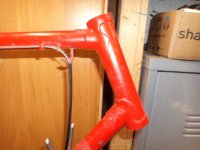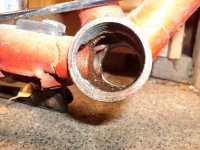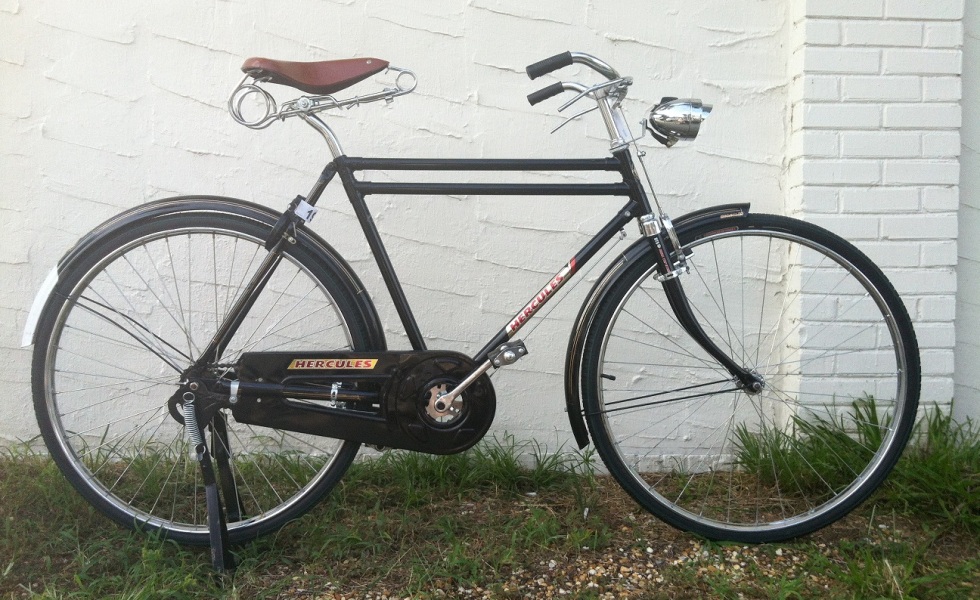ntr
1 mW
First of all, thanks for all the information on the forum, its been a great resource so far.
I would like to hear your opinion about making two through holes in a bikes head tube.
A little background first. I'm starting with my first conversion, most of the parts I need are ordered last week. The bike is a kind of sport bike from the 70's, and I want to keep it look as much as original as posible. So I want to put most of the batteries inside the frame tubes, just like the (canceled) Maxwell EP0 kickstarter project or the Triebflüge on this forum. To get the batteries in the I need to gain access to the top tube and the down tube. The best way I found is by make two holes throug the head tube in line with the top tube and down tube, so I can get the batteries in from the front.
The head tube has an outer diameter of about 31,4 mm and a wall thickness of 1 mm. Lugs are about 1,5 mm thick. The holes will be about 22 mm in diameter. This will take away half of the perimeter surface of the tube at his max. Below a few picture to illustrate.
I design the bike for a max. speed of 25 km/h (15.5 mph) to keep it street legal, and i will not go off-road with it. What do you think? Is it wise to do this or will it weaken the head tube to much? I'm not a mechanical engineer, and I don't think I can make any reliable calculations.
Good arguments will be highly appreciated. Thanks!
I would like to hear your opinion about making two through holes in a bikes head tube.
A little background first. I'm starting with my first conversion, most of the parts I need are ordered last week. The bike is a kind of sport bike from the 70's, and I want to keep it look as much as original as posible. So I want to put most of the batteries inside the frame tubes, just like the (canceled) Maxwell EP0 kickstarter project or the Triebflüge on this forum. To get the batteries in the I need to gain access to the top tube and the down tube. The best way I found is by make two holes throug the head tube in line with the top tube and down tube, so I can get the batteries in from the front.
The head tube has an outer diameter of about 31,4 mm and a wall thickness of 1 mm. Lugs are about 1,5 mm thick. The holes will be about 22 mm in diameter. This will take away half of the perimeter surface of the tube at his max. Below a few picture to illustrate.
I design the bike for a max. speed of 25 km/h (15.5 mph) to keep it street legal, and i will not go off-road with it. What do you think? Is it wise to do this or will it weaken the head tube to much? I'm not a mechanical engineer, and I don't think I can make any reliable calculations.
Good arguments will be highly appreciated. Thanks!








